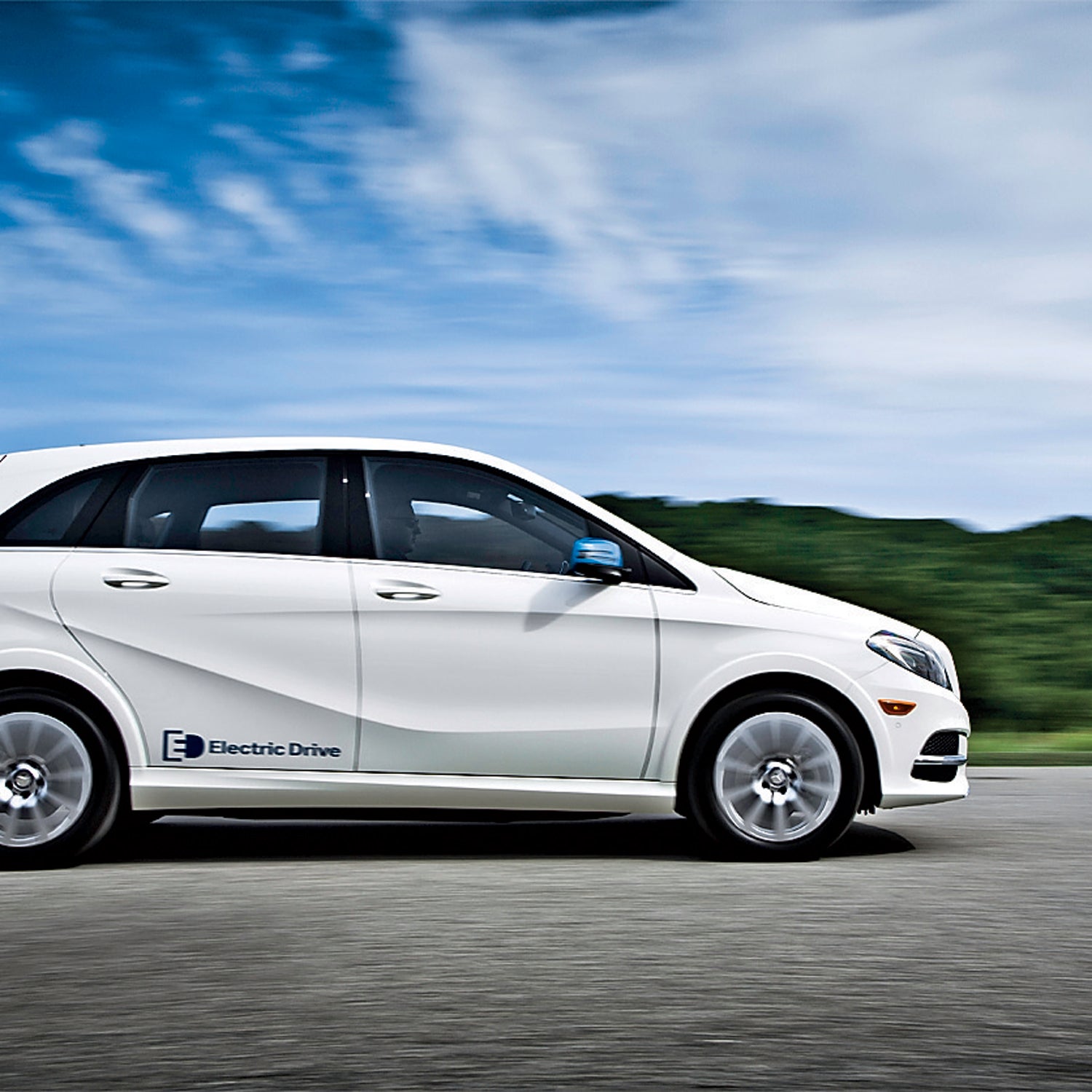The Sell: BMW isn’t the only one with an electric hatchback. And this one’s roomier.
The Test: Why get the heavier, slightly less eco-friendly ($41,450, 85 city/83 hwy MPGe) over the rival BMW i3? It’s bigger. That means it needs a larger motor and more charge, though it also gives you slightly greater range (87 miles versus 81).
But at 21.6 cubic feet, the rear cargo area is nearly double that of the i3—which could make the difference between taking a third buddy and his gear to the crag or driving a second car, obviating your green intentions. Fold down the rear seats and the total space is just shy of the Volvo V60’s. Testing the B-Class around Silicon Valley, it was zero trouble to load up a few road bikes, thanks partly to the nearly flat-load floor of the hatch space.
Do note, however, that this car is heavier than the i3 by more than 1,000 pounds, and at times it drives that way. It accelerates fast from a stoplight, with front-drive rubber grabbing on for traction, and passing juice is immediate on the highway. But handling is only sporty if you really push it, and it’s not nearly as happy bombing around two-lane s-turns.
We did like the paddle-shift adjustment of the drag that charges the batteries. Toggle the paddles that halo the steering column for more or less drag and it’s like downshifting a manual-transmission car. It’s a great way to charge the batteries and gain more traction while descending a steep two-lane road.
The exterior and interior styling is decidedly less daring than the BMW: unlike the i3, no one asked about it when parked at a coffee shop. This feels like a Mercedes with standard leather, wood, and 5.8-inch touchscreen navigation.
What’s Missing? Personality. While the VW eGolf is funky and the i3 is super futuristic, this B-Class is classic Mercedes. Confident, capable, but less fun.
The Verdict: Not quite as green—or as fun—as the BMW but roomier and more pragmatic.


